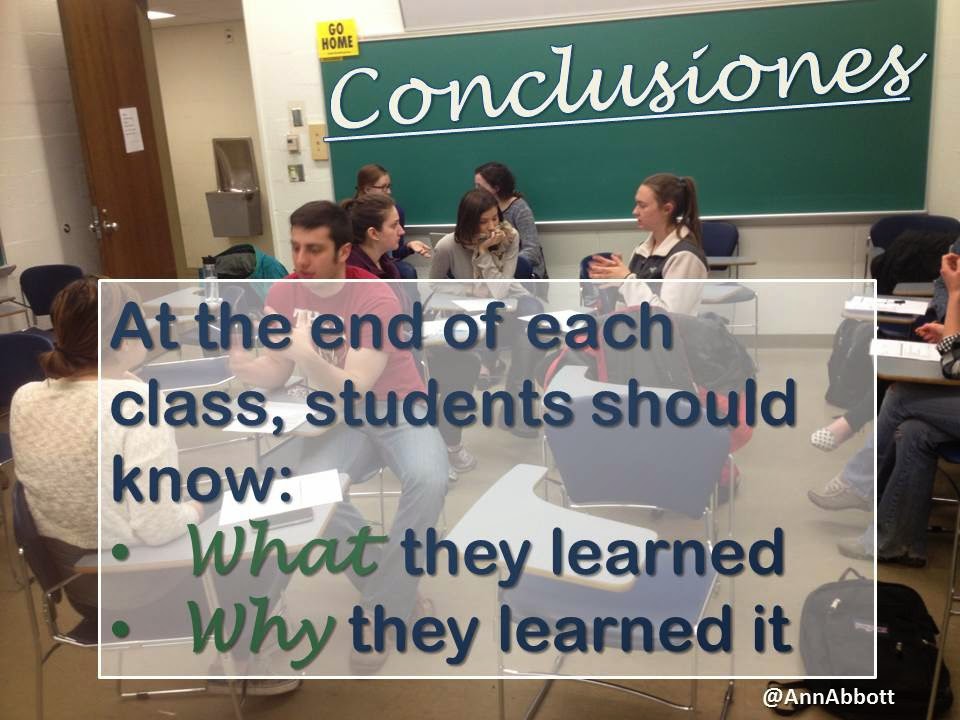The Importance of a Conclusion in a Spanish Community Service Learning Class
 |
| How do you conclude your classes? Do your students walk away with a sense of accomplishment or confusion? |
At our upcoming new-TA orientation, Dr. Florencia Henshaw will lead a session on lesson planning. She asked me for my thoughts on what makes a good transition. This is what I replied.
- Come full circle. Return to the introduction of the class and show students that they have accomplished what they set out to accomplish. In this way, they don't leave feeling that they just did busy work; they leave knowing that they went through the necessary steps to get to the final, logical step of that day's lesson.
- Focus on information, not grammar. Focus on the communicative goal that was achieved. In other words, the conclusion should not be, "okay, so today we reviewed and practiced the preterit." Now that requires that there truly be a communicative goal to the class. So in a way, the inability to pull together an effective conclusion might very well be an indication that there was no communicative/task-based goal to the lesson plan to begin with.
- What is the big picture? Connect the activities to the class, then connect the class to the course goals. Occasionally, ask students to provide the conclusion to the class. In 232 I often end the class by ticking off what we did that day and end by saying, "Now tell me, why do you think we spent our time together talking about these things? What connection do today's activities have to the goals of our course?"
- Be explicit; students don't always recognize the learning in active learning. One of the main purposes of an effective conclusion is to leave students with an explicit acknowledgement of the learning that just took place, not just we did 1, 2 and 3. Too often, students in our classes misunderstand our communicative language learning, task-based, active-learning lessons as, "Well, I had a good time today, but I didn't really learn anything."
- Briefly tie it all together. A good conclusion can be as short as a couple of sentences. It does not have to be boring or long.
Ann



Comments
Post a Comment